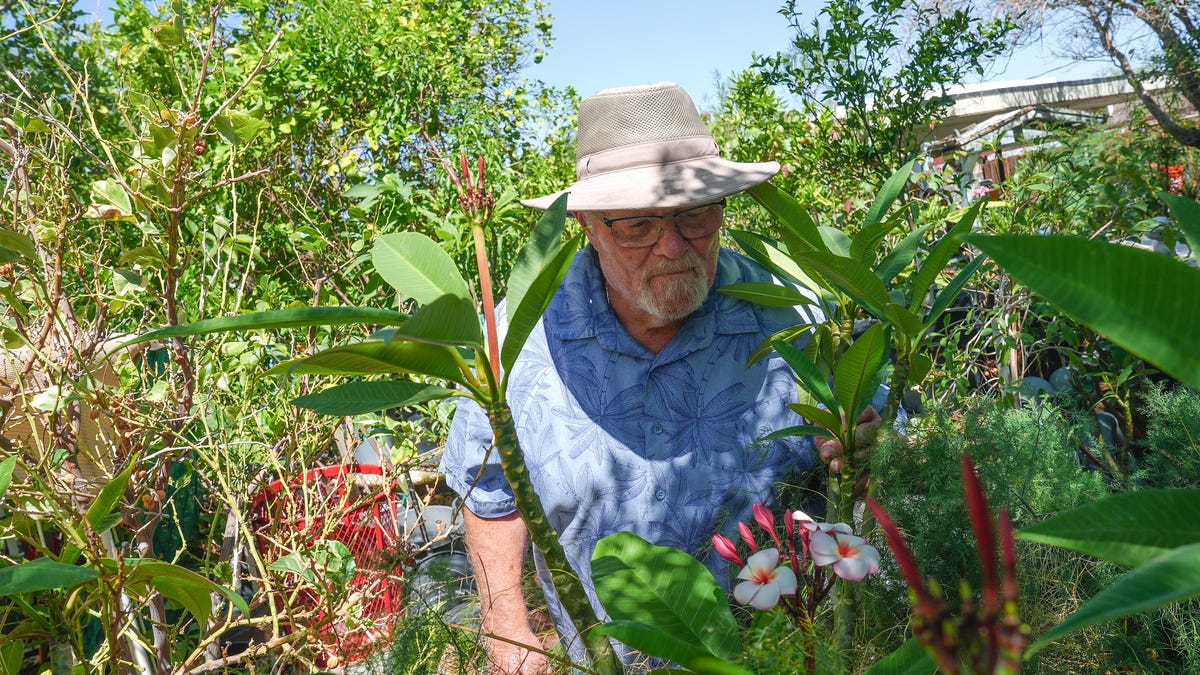When December rolls around, the garden takes a beat and so do we. The trees stop shedding their leaves and fall into a slumber. Most of the weeds have been pulled and the lawnmower is back in the shed. You’re busy getting ready for the holidays, and maybe you prefer to spend the month pouring over catalogs and drinking hot cocoa. But December is also a month where you can plant the seeds for a beautiful garden next spring—especially if you live in a mild Southern climate. These are the gardening tasks you should do in December in any Southern garden.
Harvest Veggies That Won’t Survive A Hard Freeze
If you still have winter vegetables in the garden, December is a good time to harvest. The harsh freezes of January and February are ahead. Dig up the last of your root vegetables like parsnips, beets, and carrots. Clip those last leaves of lettuce, unless you plan to provide cover any time a hard freeze is forecast.
Clean Up Fallen Foliage
You’ve most likely raked up any leaves on the lawn, but this is a good time to peek under your shrubs and fruit trees and remove any diseased foliage that has fallen. While gardeners like to “leave the leaves” to encourage healthy soil and beneficial insects, you’ll want to clean up anything that could harbor diseases over the winter.
Plant Spring Flower Bulbs
Assuming your soil hasn’t frozen rock solid, you can still plant spring bulbs in early December in the South. Many Southern gardeners pre-chill bulbs in the refrigerator to make sure they get enough exposure to cold temperatures, but you can also purchase pre-chilled bulbs to ensure a bloom.
Do Your Winter Pruning
Now that trees are dormant, you can prune away diseased or crossing branches and remove suckers and sprouts. You can also lightly shape trees and shrubs, but heavy pruning is best left until late winter right before plants emerge from dormancy.
Stay away from late winter or early spring bloomers. Pruning dogwood, forsythia, azaleas, and rhododendrons now will mean fewer flowers in the spring.
Protect Your Plants
Protect frost-sensitive shrubs and perennials with a warm, 2-to-3-inch layer of mulch or leaves. Wrap the trunk of very young trees to help protect them from sun scald, making sure to remove it after the last frost in spring. Have row cover fabric or old sheets handy to throw over the winter vegetable garden whenever a hard frost is forecast.
Order Bare-Root Trees And Roses
Winter is when you really see the bones of your garden. Take a look around and notice any bare spots you’d like to fill. Bare-root trees and roses can be ordered between late November and March, depending on your local climate. Get them in the ground quickly to settle in before spring.
Lime Your Lawn
While you can put the sprinklers and mower away in December, this is a great time of year to apply lime to your lawn with a push spreader. Have your soil tested with your local extension office if you haven’t already. They’ll determine how acidic your soil is and make recommendations for applying lime. Accomplishing this task in December gives the lime time to take effect before spring.
Read the original article on Southern Living









